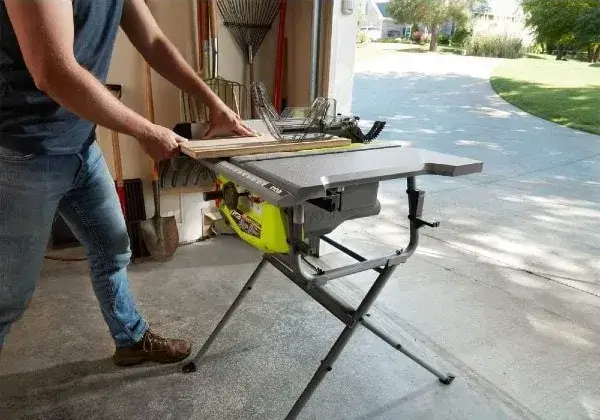Table saws are one of the most versatile and essential tools for woodworking. They can cut wood into different shapes and sizes, make precise and accurate cuts, and handle various materials. But does the size of the table saw matter? How do you choose the right table saw for your needs? In this article, we will answer these questions and more.
It depends
The size of the table saw matters depending on your project, space, budget, and preference. There is no one-size-fits-all answer to this question, as different table saws have different advantages and disadvantages. However, there are some general factors that you can consider when choosing a table saw size:
Project: The type and size of the project you are working on will determine the size of the table saw you need. For example, if you are making small and simple cuts, such as crosscutting boards or ripping plywood, you can use a smaller table saw. However, if you are making large and complex cuts, such as cutting angles, dados, or tenons, you will need a larger table saw with more power and capacity.
Space: The amount of space you have in your workshop or garage will also affect the size of the table saw you can use. Smaller table saws are more portable and compact, which means they can fit in tight spaces and be easily moved around. Larger table saws are more stable and durable, but they also take up more space and are harder to transport.
Budget: The cost of the table saw is another factor that you should consider when choosing a size. Generally speaking, smaller table saws are cheaper than larger ones, as they have less features and components. However, this does not mean that smaller table saws are inferior or less quality. You can still find high-quality and reliable smaller table saws that can perform well and last long. On the other hand, larger table saws are more expensive, as they have more features and components. However, this also means that larger table saws are more versatile and powerful, and can handle more demanding tasks and materials.
Preference: The final factor that you should consider when choosing a table saw size is your personal preference. Ultimately, you should choose a table saw that suits your style, comfort, and skill level. For example, some people prefer smaller table saws because they are easier to use and control, while others prefer larger table saws because they offer more options and capabilities. You should also consider the safety and maintenance aspects of the table saw, as different sizes may have different risks and requirements.
Types of table saws by size
To help you understand the differences between table saw sizes, here are the main types of table saws by size, along with their pros and cons:
Benchtop table saws: These are the smallest and lightest table saws available, as they are designed to be placed on a workbench or a stand. They are also the most affordable and portable table saws, as they can be easily carried and stored. Benchtop table saws are ideal for hobbyists, DIYers, and beginners, as they can handle basic and light-duty tasks. However, benchtop table saws also have some limitations, such as low power, small rip capacity, limited accuracy, and poor dust collection.
Contractor table saws: These are the next size up from benchtop table saws, as they are designed to be used by contractors and professionals. They are also known as jobsite table saws, as they are often used on construction sites and other outdoor locations. Contractor table saws are more powerful and durable than benchtop table saws, as they have larger motors, cast iron tables, and steel frames. They are also more versatile and adjustable, as they have extension wings, fences, and miter gauges. However, contractor table saws are also more expensive and heavier than benchtop table saws, and they still have some limitations, such as low accuracy, poor dust collection, and loud noise.
Cabinet table saws: These are the largest and heaviest table saws available, as they are designed to be used in a permanent and dedicated location. They are also the most expensive and powerful table saws, as they have huge motors, cast iron tables, and steel cabinets. They are also the most accurate and reliable table saws, as they have precise and smooth adjustments, fences, and miter gauges. They are also the best for dust collection, as they have enclosed cabinets and dust ports. Cabinet table saws are ideal for professional woodworkers, cabinet makers, and furniture makers, as they can handle any task and material. However, cabinet table saws are also the most difficult to transport and install, and they require a lot of space and maintenance.
Conclusion
Table saw size matters depending on your project, space, budget, and preference. There is no definitive answer to this question, as different table saws have different advantages and disadvantages. However, you can use the factors and types we discussed in this article to help you choose the right table saw size for your needs. Remember, the best table saw size is the one that works for you and your goals. Happy woodworking!

